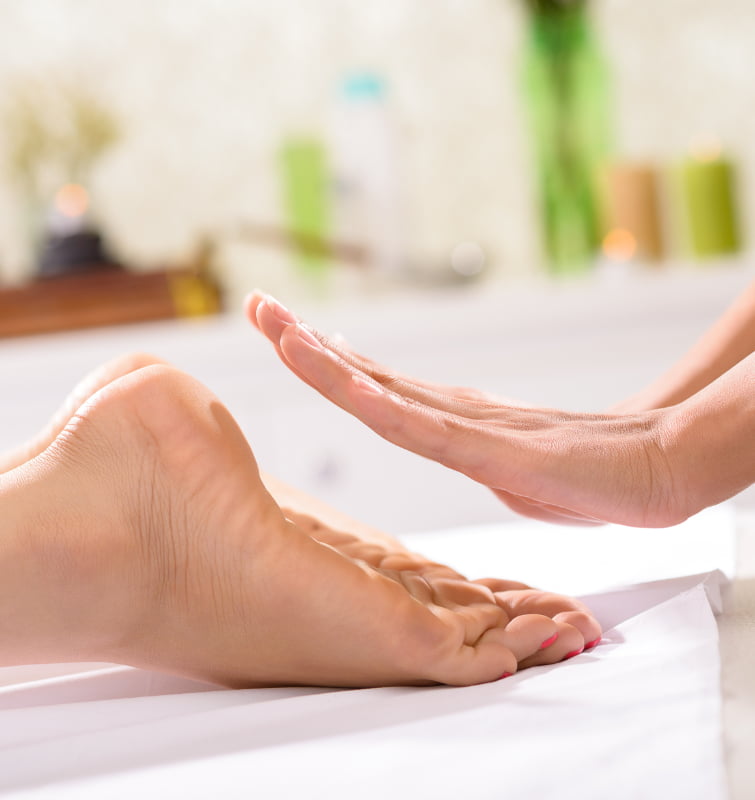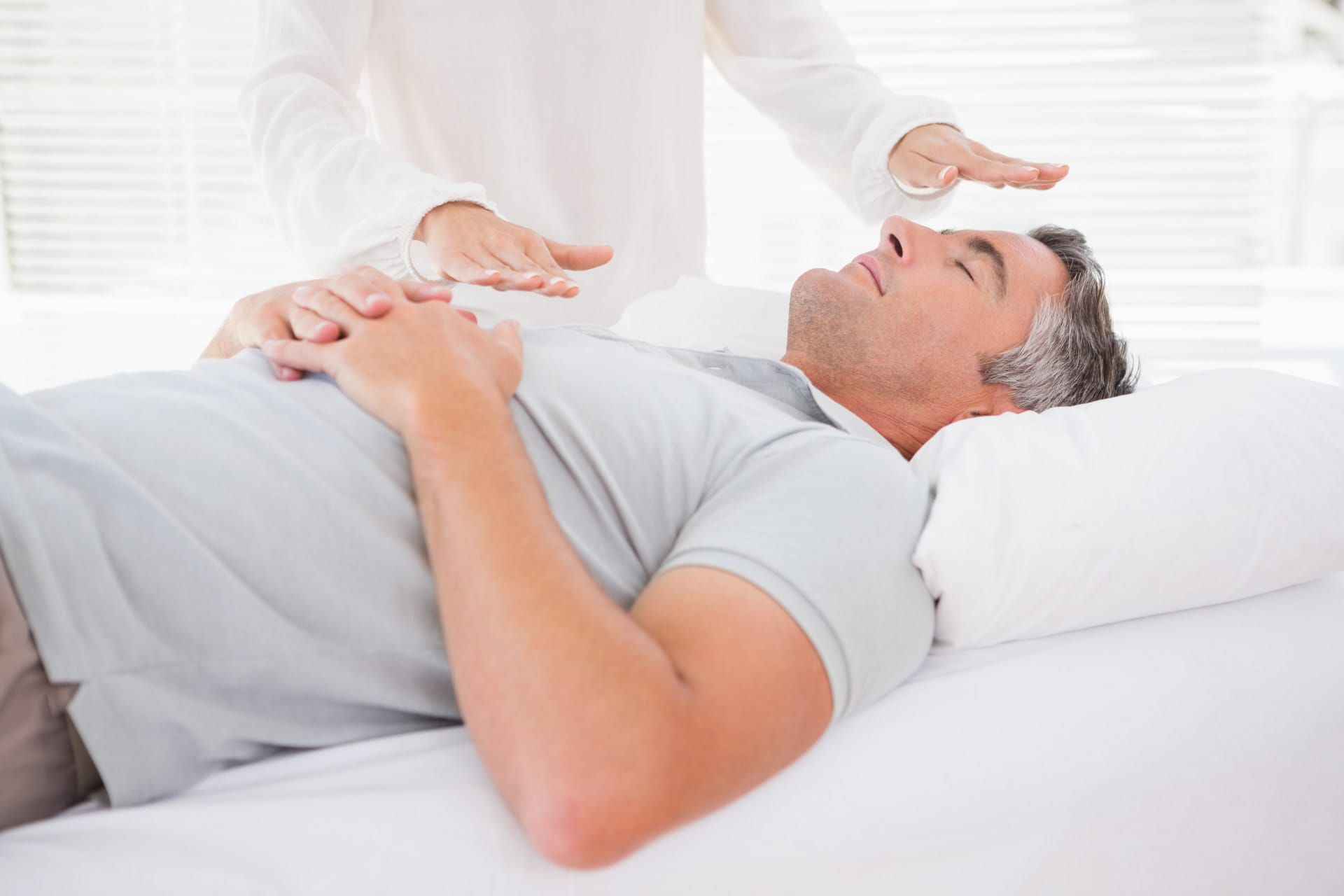It is a method based on the idea that the energy within our bodies is essential to fostering health and effective body functioning.
A treatment involves stroking, hand positions, and non-invasive breathing techniques.
This blog will explain what Reiki is and how Reiki works.
What Is Reiki?
It is a complementary therapy. It’s done by using the hands to channel universal life force energy.
Practitioners believe that the body has its inherent ability to heal itself, and this is what Reiki helps facilitate.
An Ancient Practice
It’s a form of hands-on or hands-off healing practised in Japan for many years.
The practitioner may focus on an area of pain or illness for those with physical ailments or simply concentrate on their chakras (energy centres) for those seeking spiritual healing.
Assumption of the Body’s Natural Healing Abilities
Central to the philosophy is that the human body is able to heal itself. Like a finely tuned instrument, our bodies constantly strive for balance and well-being. It acts as a catalyst to unlock and amplify these natural healing abilities. By tapping into the body’s internal wisdom, practitioners facilitate a harmonious energy flow, promoting restoration and vitality.
Reiki also assumes that our body has natural healing abilities, but sometimes those abilities are blocked by stress, anxiety and pain.
Stress, anxiety, and pain can create energetic blockages that impede the natural flow of life force within us. It is an external source of healing energy directed with intention and mindfulness by the practitioner.
Through gentle strokes and focused attention, these energies dissolve the barriers that hinder optimal functioning. Imagine Reiki as the gentle stream that clears away debris, allowing the river of life force to course through unobstructed.
According to practitioners, it helps reduce stress, anxiety and pain:
- Releasing negative emotions (such as anger or fear) from your body can do wonders for your health overall – including mental well-being.
- Relaxing muscles after exercise or hard work will keep them from getting sore in the future (which means less downtime for recovery).
Benefits of Releasing Negative Emotions
Negative emotions often manifest as physical ailments and disruptions in our well-being.
In the practice of Reiki, the release of these emotions is considered paramount. Addressing the energetic roots of negative emotions contributes to a holistic release, fostering a sense of lightness and clarity.
The benefits extend beyond the immediate session, influencing overall mental and emotional well-being. Participants often report feeling a profound sense of relaxation, balance, and an uplifting of their spirits.
In the unblocking and unlocking process, Reiki becomes a transformative journey, releasing the shackles of stress and negativity and inviting a renewed sense of harmony into our lives.
Learning How to Do Reiki
There are options if one is interested in learning about this complementary therapy. One can choose to enrol in a class, participate in a workshop or even explore online learning opportunities. If hands-on experience is preferred, there are establishments that offer courses and workshops tailored to it.
Sessions are non-invasive.
In healing, the concept of invasiveness often conjures images of needles, herbs, or intrusive procedures. Reiki, however, offers a refreshing departure from these notions, ushering in a realm of non-invasiveness that focuses on the delicate dance of energy within the body.
Concept of Chakras and Their Role in Pain and Illness
At the heart of Reiki lies the ancient understanding of chakras—energy centres within our bodies that play a pivotal role in our physical and emotional well-being. These energy hubs, when in balance, contribute to a harmonious flow of life force. However, as mentioned, imbalances can manifest as pain or illness. Practitioners, attuned to the subtleties of these energy centres, work to restore balance by channelling healing energy into the body. It’s a dance with the unseen, a quest to bring equilibrium to the body’s energetic symphony.
Beyond Needles and Herbs
Practitioners act as conduits for universal life force energy. What makes it particularly unique is the non-intentional touch during sessions. While practitioners place their hands in various positions to direct energy, intentional physical contact is not a primary aspect of the practice. This deliberate distance allows for a profound experience where some individuals find relaxation more accessible when the practitioner’s hands are kept at a respectful distance.
This non-invasive approach extends beyond the physical to create an environment conducive to mental and emotional ease. It’s a practice that honours personal boundaries while nurturing the intricate dance of energy within, offering a unique and gentle pathway to well-being.
Sessions usually last between 20 to 90 minutes.
During a session, you can lie on a treatment table or floor or be seated and keep your eyes closed for the session. The room will be quiet and relaxed. You can also opt to have a blanket covering you and earplugs or headphones playing soothing music during your treatment, which is perfect if you’re looking for complete relaxation!
Effectiveness of Reiki
Many people who have had this complementary therapy say it helps relieves stress and improve their overall well-being.
There are quite a few studies on its effectiveness. It is up to you to decide if you want to use this complementary therapy.
Here are some articles and studies for you to look into:
Reiki and Cancer [1] – Cancer Research UK
Reiki for depression and anxiety [2] – Pubmed
Effects of Reiki on Stress [3] – US National Library of Medicine: ClinicalTrials.gov
Cancer – American Cancer Society [4]
A Large-Scale Effectiveness Trial of Reiki for Physical and Psychological Health [5] – Pubmed

Conclusion
Deciding to embrace Reiki for improving one’s being is a choice that aligns with the specific needs and aspirations of each individual. Whether seeking solace from stress, healing from ailments, or simply desiring a harmonious energy flow, the power to choose rests firmly in your hands.
It is a gentle guide, inviting you to tap into your intuition and allowing your inner wisdom to lead the way.
The journey is yours, and the possibilities are as infinite as the energy that flows through us all.
References
[1] “Reiki | Complementary and Alternative Therapy | Cancer Research UK.” Www.cancerresearchuk.org, www.cancerresearchuk.org/about-cancer/treatment/complementary-alternative-therapies/individual-therapies/reiki. Accessed 20 Jan. 2023.
[2] Joyce, Janine, and G Peter Herbison. “Reiki for Depression and Anxiety.” Cochrane Database of Systematic Reviews, 3 Apr. 2015, 10.1002/14651858.cd006833.pub2.
[3] Fox, Joan, et al. “Effects of Reiki on Physiological Consequences of Acute Stress.” Clinicaltrials.gov, 20 Sept. 2012, clinicaltrials.gov/ct2/show/NCT00346671.
[4] Beard, Clair, et al. “Effects of Complementary Therapies on Clinical Outcomes in Patients Being Treated with Radiation Therapy for Prostate Cancer.” Cancer, vol. 117, no. 1, 27 Aug. 2010, pp. 96–102, 10.1002/cncr.25291.
[5] Dyer, Natalie L., et al. “A Large-Scale Effectiveness Trial of Reiki for Physical and Psychological Health.” The Journal of Alternative and Complementary Medicine, vol. 25, no. 12, 22 Oct. 2019, 10.1089/acm.2019.0022.





0 Comments